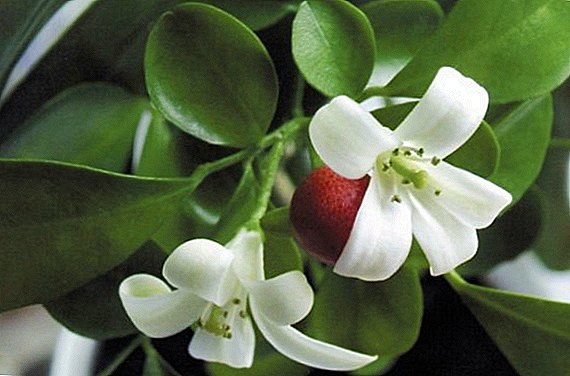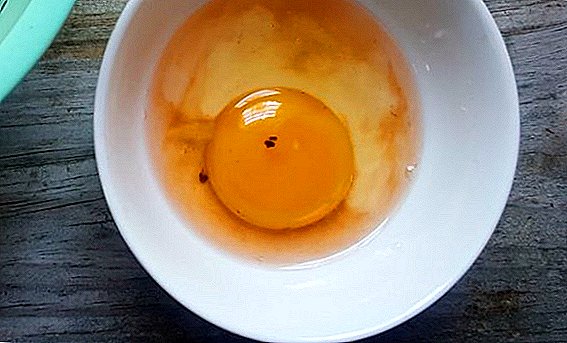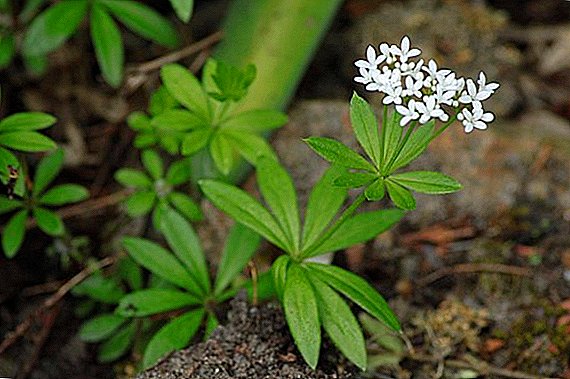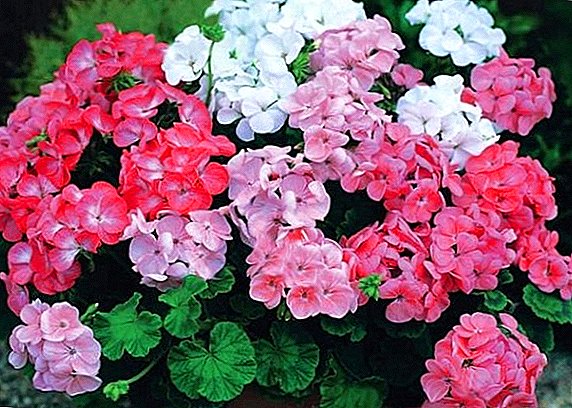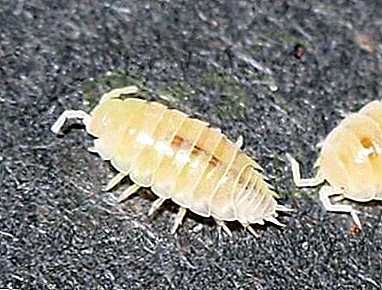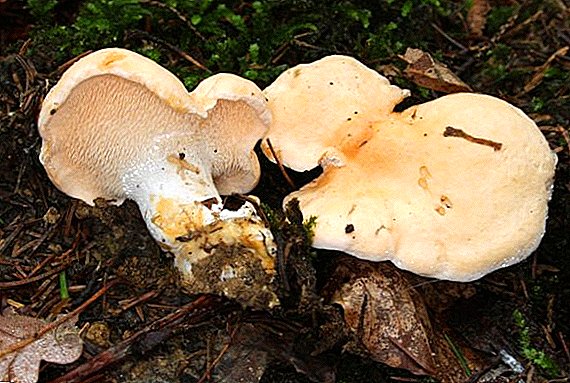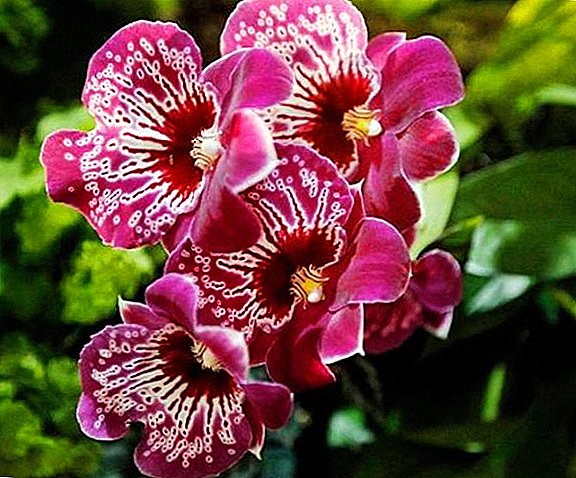
Miltonia is a very beautiful, brightly flowering perennial plant of the Orchid family. Miltonia is a very capricious flower that requires constant painstaking care.
Miltonia: general description
It is believed that miltonia came to us from South America. It is called the "air" orchid, because in nature it grows on trees or other plants, taking some of the nutrients from them and getting moisture from the air with its air roots.
Did you know? The name “miltonia” was named after E. Milton, a scientist from England, who doted in orchids and collected them.
In nature, there are many types of orchids miltonia, formed as a result of natural mixing. In addition, breeders are engaged in artificial hybridization. It happens that one species can have 5-6 parents-orchids. 
The leaves of miltonia are gray-yellow in color, but the flowers are very different: red, purple, bright pink, etc. The peculiarity of the flowers of this plant in the pattern on the petals is that they resemble butterfly wings.
What Miltonia Needs for Successful Growth
Miltonia is a demanding plant. Caring for miltonia at home can give the owner a lot of trouble, but the flower will thank the beautiful and fragrant blooms throughout the year.
It is important to provide the plant with a good nutritious soil, bright, but not scorching light, regular watering, fertilizer and moist air.
Did you know? The Orchid family is the record holder of the vegetable kingdom in the number of hybrids.
Lighting
Miltonia loves heat and diffused light. It is not recommended to put a pot with a plant in the summer on the window sill of a southern window, since the scorching sun simply burns the leaves.
 If there are no other options, you will need to pritenyat it with gauze, paper or blinds. The ideal solution is to grow miltonia in the western or eastern window, or just on a rack in the middle of a room or on a wall.
If there are no other options, you will need to pritenyat it with gauze, paper or blinds. The ideal solution is to grow miltonia in the western or eastern window, or just on a rack in the middle of a room or on a wall.
But here it is necessary to follow the light. Dark foliage miltonia will be an indicator of lack of coverage.
Temperature
For miltonia orchids, home care should ensure warmth and the absence of temperature changes. The standard temperature of the apartment is 20-23 ° C during the day and 16-17 ° C at night - this whimsical flower is fine, but still in winter you should not settle the flower near radiators or other heaters to avoid overdrying of the plant.
Important! Miltonia likes to ventilate the room, but no drafts should be allowed.
Compressed, twisted leaves, young shoots practically do not appear on the wrong temperature regime, and those that already exist stop their growth. However, miltonia is amenable to "nurturing," like other plants. And this means that even to approximate conditions a flower can often adapt well.
Air humidity
 Fans of domestic plants should be aware that a flower such as miltonia has a requirement for air humidity. The ideal level is 65-70%. Under normal conditions, a city apartment does not have this level of humidity. You can fix the situation with the help of various kinds of humidifiers - both electrical appliances and home-made devices.
Fans of domestic plants should be aware that a flower such as miltonia has a requirement for air humidity. The ideal level is 65-70%. Under normal conditions, a city apartment does not have this level of humidity. You can fix the situation with the help of various kinds of humidifiers - both electrical appliances and home-made devices.
You can install a pot of water next to the pot, which will gradually evaporate. Even better - buy or make the most pallet with a lattice for the pot. Water is poured at the bottom, a pot is placed on top. It is important not to allow miltonia roots to touch water.
Important! High levels of air humidity require ventilation and room ventilation.
Spraying from a spray bottle is often used. But here there is a feature: you can not splash water directly on the inflorescences and leaves.
It will be right to spray it around the flower, moistening the air.
A direct hit of water on a plant can cause staining, or even the generation of pests.
Soil type
The soil for this Brazilian beauty should be loose and moderately moist. The bark of the pot is often placed on the bottom of the pot as drainage.
The soil itself is recommended to be made of sphagnum, crushed spruce bark, perlite. You can also use the purchase of special soil for orchids from the store.
Miltonia how to care after purchase
 Choosing miltonia, leaving after purchase should begin immediately, as soon as the plant enters the house. Choosing the right place to keep, given the light and temperature. It is also important to know how watering and fertilizing of this orchid species takes place.
Choosing miltonia, leaving after purchase should begin immediately, as soon as the plant enters the house. Choosing the right place to keep, given the light and temperature. It is also important to know how watering and fertilizing of this orchid species takes place.
When to transplant miltonia
As with other types of orchids, miltonia transplants should not be performed frequently. Usually this is done every 3-4 years. The signal for the plant to replant is the roots sticking out of the pot.
Miltonia, though not fond of spacious pots, should still be a place for the root system.
Before transplanting miltonia, you should decide on the soil. Soil for can be purchased in a specialized store (for sale there is a ready-made, rich mixture of necessary elements), or you can prepare it yourself.
Important! Simple "earthen" soil is not suitable for planting miltonia into it.You can take chopped moss, leaf ground, chopped fern roots, peat ground and saturate the soil under miltonia with this.
It is better to replant the flower in spring after the orchid has blossomed. It is necessary to carefully remove the flower from the pot (sometimes you have to cut the pot so as not to damage the root system), shake off the old soil, and if necessary, cut dry and rotten roots with scissors.
The pot is better to take a plastic rather than a ceramic, because it holds moisture better. Filling it with a substrate, you do not need to make it too dense, the soil should be a bit loose.
The growth point of miltonia should be on the surface, just below the sides of the pot itself. The soil is slightly moistened and left in the shade for several days. 
How to water a houseplant
As for irrigation, the soil under the miltonia should be well hydrated. Soft rainwater or separated water is used. In the natural environment, this plant is regularly exposed to tropical rainfall, which means that you need to create similar conditions at home.
However, in no case should stagnation of water in the pot be allowed, otherwise it will lead to rotting of the miltonia roots. The soil should always be loose, the pot should be with special holes at the bottom and even on the side faces. Watering is carried out with warm water, about once every 4-5 days. Water from the pan should be poured regularly.
Important! The most regular watering coincides with the active stage of miltonia growth - in spring and summer. In winter, the flower can be watered much less often, but not leaving the soil completely dry.You can not pour water directly under the root of the flower. It should add a thin stream of orchid on the inner edge of the pot.
Fertilizer and dressing miltonia
Miltonia, like other orchids, needs feeding and fertilizer. It would be best to buy a mixture of orchid fertilizer in a specialized store. But you need to use it carefully, reducing the proportions indicated on the packaging by half.
Top dressing should be regular and balanced, once every 2-3 weeks will be quite enough if it is a period of active growth of the plant. But in the winter, when miltonia is resting, feeding can be temporarily stopped.
How to multiply miltonia
Miltonia suitable reproduction vegetative way. When the plant has formed more than 5-6 pseudobulbs, it is already possible to separate the sprout, where there are at least 3 pseudobulbs, and, sprinkling the cut site with crushed coal, try to land in a separate pot.
 It is desirable to do this at the end of the summer, but not more often than once every 3 years. Miltonia, of course, does not like such divisions, because the more a pseudobulb of a flower, the faster it grows and fights external problems.
It is desirable to do this at the end of the summer, but not more often than once every 3 years. Miltonia, of course, does not like such divisions, because the more a pseudobulb of a flower, the faster it grows and fights external problems.
Major flower diseases and pests
In the case of miltonia, it is important to know how to care for her during this period. To do this, you first need to determine the cause of the disease.
- One of them may be waterlogging of the ground. The root system begins to rot, which can lead to the death of the entire plant. In this case, you should immediately remove the miltonia from the pot, cut all the affected parts of the roots, treat the sections with coal, and transplant in a new clean sterile pot. Watering for the near term should be reduced.
- Another common problem is substrate salinity. The tips of the leaves of the orchid begin to dry, which means that it is urgent to switch to watering the pot with soft, warm water.
- If the flower is in a room where the humidity is too low, or there is a direct hit of the sun’s rays on the orchid, miltonia turns yellow. Accordingly, it is necessary to immediately correct the external impact.
- Having noticed black spots on the leaves, you should check the presence of various pests on the reverse side: aphids, whiteflies, spider mites, etc. You can destroy them with special solutions "Mospilan" or "Bankol" (you must follow the instructions on the package).
 What to do if the store is "lucky" to buy a plant with damaged roots, or in the process of leaving the roots rot? How to save miltonia? This is quite realistic, although it will take a lot of time. It should be every day for about 3-4 hours soak the plant in warm water (21 ºC). And in addition to the water every two weeks add growth stimulant.
What to do if the store is "lucky" to buy a plant with damaged roots, or in the process of leaving the roots rot? How to save miltonia? This is quite realistic, although it will take a lot of time. It should be every day for about 3-4 hours soak the plant in warm water (21 ºC). And in addition to the water every two weeks add growth stimulant.
To enjoy the bloom of miltonia, you need to put a lot of effort. Nevertheless, this flower remains quite popular among fans of home flowerpots. It is important to forget to moisturize the soil under the miltonia and fertilize it in time, then you can enjoy bright flowering all year round.


